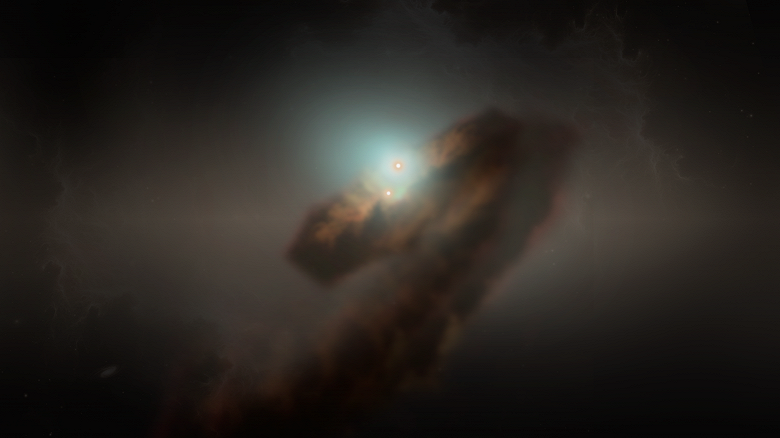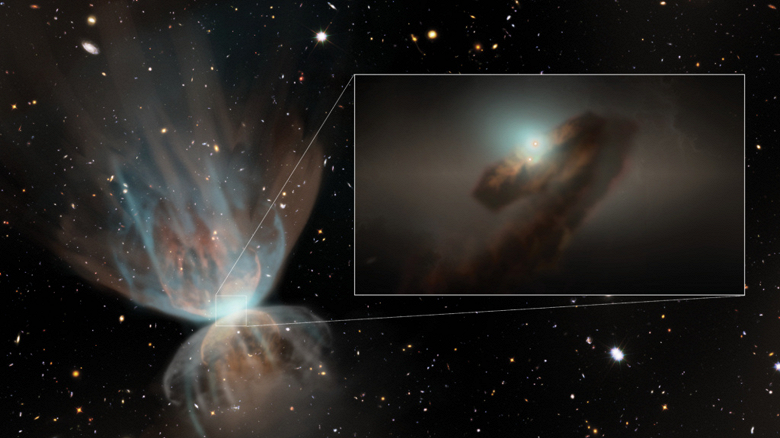Traces of gas flows indicate the turbulent youth of some stars
Using data obtained from the Atacama Large Millimeter/submillimeter Array (ALMA) – Group of 66 radio telescopes located in northern Chile, a group of researchers was able to shed light on a mysterious phenomenon in the constellation Orion.
The binary star system FU Orionis (FU Ori), about 1,500 light-years from Earth, first surprised astronomers in 1936 when its brightness suddenly increased by about 1,000 times. Such explosive brightening would be expected from old, dying stars, but the age of the FU Ori stars is estimated at only 2 million years – they are just «babies» in cosmic terms, compared to our middle-aged star, the 4.6-billion-year-old Sun.
The discovery of the FU Ori flare led to the classification of an entirely new type of star – «FU Ori»stars that suddenly become brighter and then dim over the course of many years. Scientists have discovered that this explosive enlightenment is the result of «fuors» «steal» energy from its surroundings through the same process that helps stars and planets form: gravitational accretion of material.
«We have been studying FU Orionis since the first ALMA observations in 2012. It's very exciting to finally get answers. FU Ori consumed material for almost 100 years to fuel the eruption. We've finally found the answer to how these young stars gain mass. For the first time, we have direct observational evidence of the material fueling the eruptions&rdash; says Antonio Hales, team leader and scientist at the National Radio Astronomy Observatory (NRAO).
The team's discovery is a trickle of material, mostly carbon monoxide, that falls onto the stars. Although this thin stream of gas fuels the stars, it is not large enough to explain the 100-year eruptions and luminosity of this system. The team suggests that what they see today in ALMA – these are the remnants of much more matter that once fell into this young star system.
«It is quite possible that interaction with a larger gas flow in the past led to the system becoming unstable, which caused an increase in brightness», – Hales continued.
To see the different emissions from this star system and detect the flow of mass pulled by it, the team observed FU Ori in several different configurations on the 66 radio antennas in the Atacama Desert that make up ALMA. They also used numerical models to simulate the flow of gas to young stars.

A team of researchers was able to make significant progress in understanding the nature of the flares by comparing the shape and speed of the observed structure with those expected from the trail of falling gas. In addition to detecting «jet» material, the team also saw slow-moving carbon monoxide leaking from the system. However, this gas does not appear to be associated with the recent release. The observed flow resembles others associated with protostars – young stars that have not yet collected enough mass from their surroundings to cause nuclear fusion of hydrogen with helium in their cores, which is the process that defines a main sequence star.
Studying the FU Ori phenomenon helps shed light on the general processes of star formation and the formation of planetary systems.

